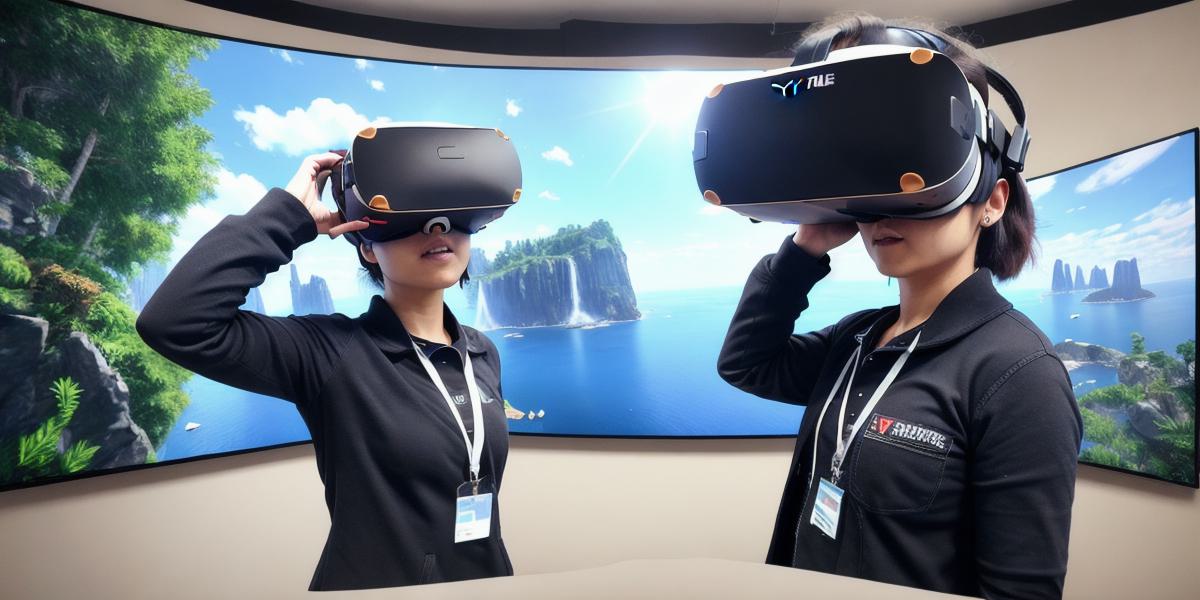Virtual Reality (VR) is a rapidly evolving technology that has already changed the way we interact with digital content. As more developers enter the market, it’s important to consider whether VR experiences are truly good for users. In this article, we will explore the benefits and drawbacks of VR, examine case studies from successful VR applications, and delve into the latest research on this exciting technology.
Benefits of VR Experience
Enhanced Immersivity
One of the key advantages of VR experiences is their ability to transport users into a fully immersive environment. By using specialized headsets, sensors, and other devices, users can experience a level of realism that is difficult to achieve with traditional media such as movies or video games. This increased immersion has been shown to improve user engagement, motivation, and overall satisfaction with the experience.
Improved Learning and Training
Virtual Reality has the potential to revolutionize education and training by providing a safe and controlled environment for users to learn new skills and explore complex concepts. For example, medical students can use VR simulations to practice surgeries without risking patient lives, while pilots can train in virtual skies without leaving the ground. These immersive experiences have been shown to improve learning outcomes, reduce errors, and increase confidence in real-world scenarios.
Boosted Creativity and Innovation
Virtual Reality offers a unique platform for designers, artists, and other creative professionals to explore new ideas and push the boundaries of their craft. By using VR tools such as 3D modeling software or interactive installations, creators can immerse themselves in a virtual world and experiment with new forms of expression. This increased creativity has been shown to lead to more innovative products and services, as well as a greater sense of fulfillment and satisfaction among users.
Drawbacks of VR Experience
Motion Sickness
One of the most common issues associated with VR experiences is motion sickness. This can occur when the user’s perception of movement in the virtual world conflicts with their real-world senses, leading to feelings of dizziness, nausea, and headaches. While some users may be more susceptible to motion sickness than others, there are steps that developers can take to minimize its impact, such as providing a comfortable seating position, adjusting the field of view, and using smooth transitions between virtual environments.
High Costs
Virtual Reality technology is still relatively expensive, with high-end headsets, sensors, and other devices costing thousands of dollars. While this cost may come down in the future, it can be a barrier to entry for many businesses and organizations, limiting their ability to adopt VR technologies.
Limited Accessibility
Virtual Reality experiences are not accessible to everyone, as they require specialized equipment and software that may not be available in all locations. Additionally, users with certain physical disabilities or sensory impairments may find it difficult to use VR technology effectively. As VR continues to evolve, it’s important for developers to consider these limitations and strive to make their experiences more inclusive.
Case Studies: Successful VR Applications
Virtual Tourism
One of the most promising applications of VR is in the field of tourism. By using VR technology, users can explore remote or dangerous destinations from the comfort of their own homes. This has already led to the development of virtual tours of national parks, ancient ruins, and other popular attractions. These experiences have been shown to be highly engaging and motivating, leading to increased travel bookings and overall revenue for the tourism industry.
Training and Simulation
As mentioned earlier, Virtual Reality has the potential to revolutionize education and training by providing a safe and controlled environment for users to learn new skills and explore complex concepts.
